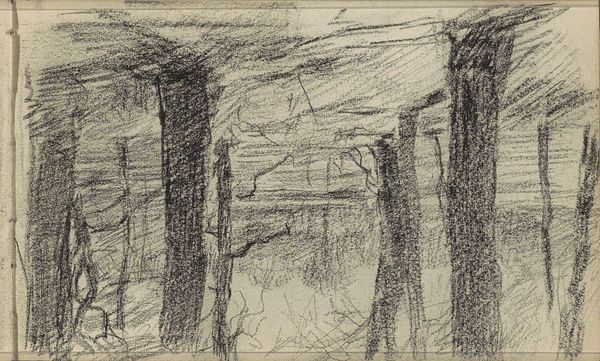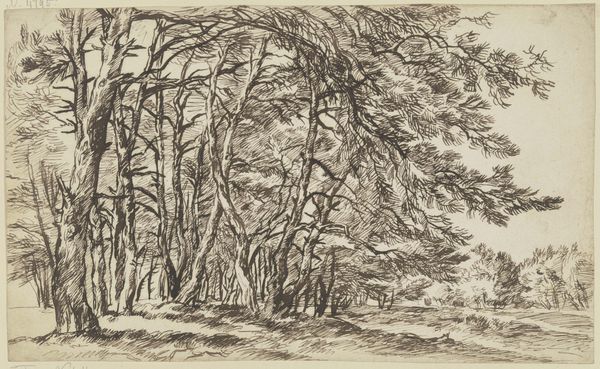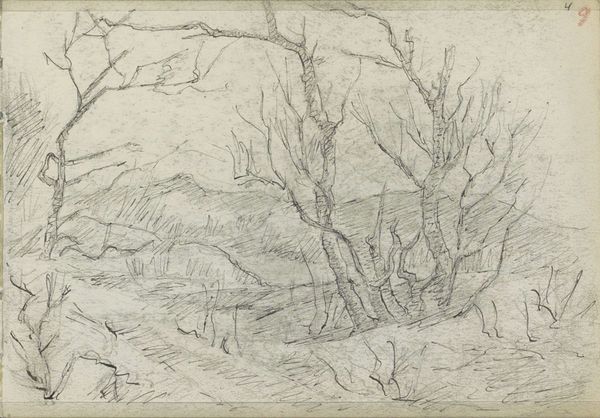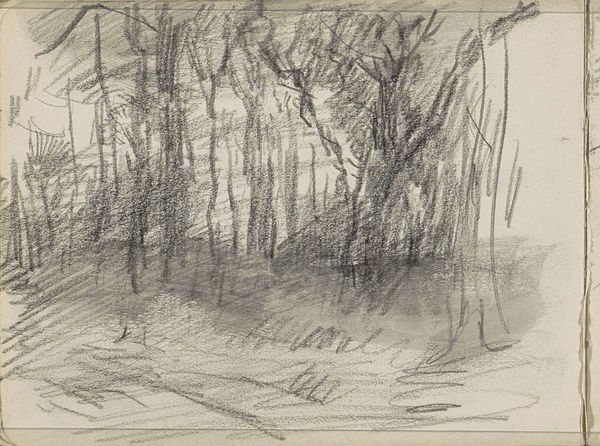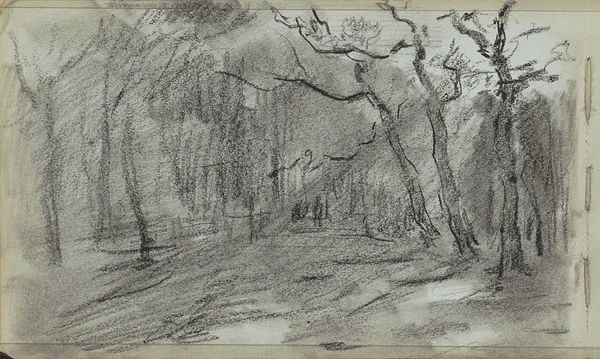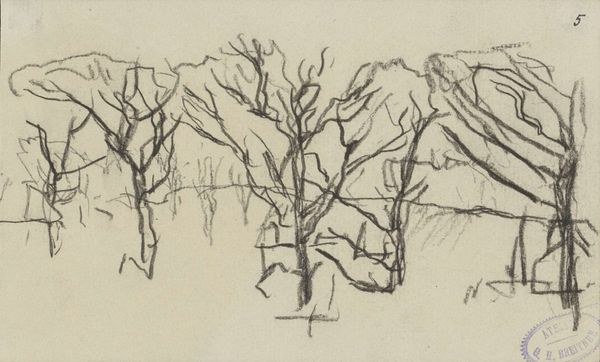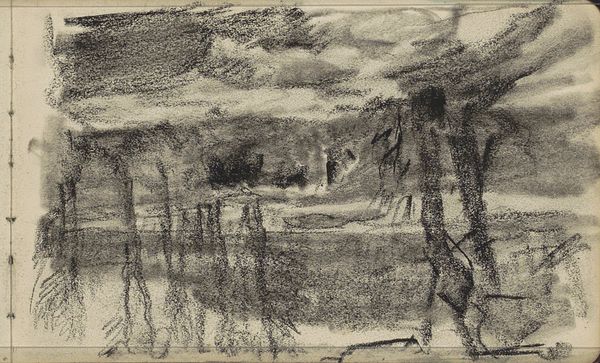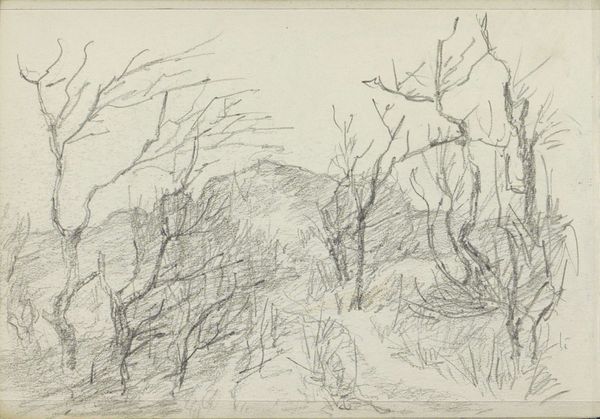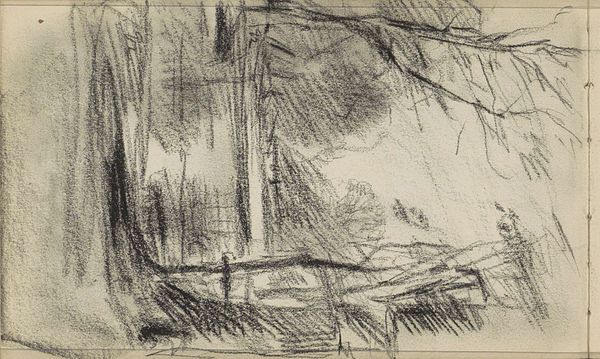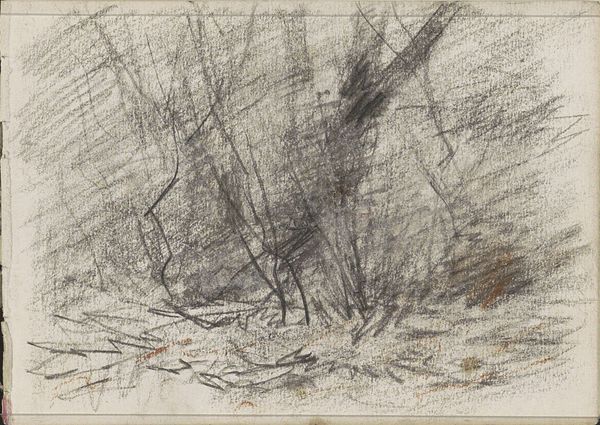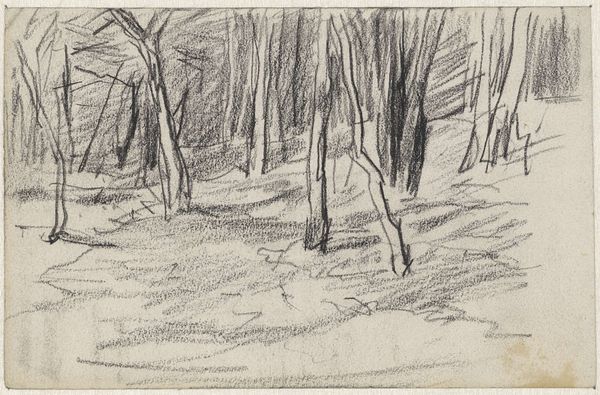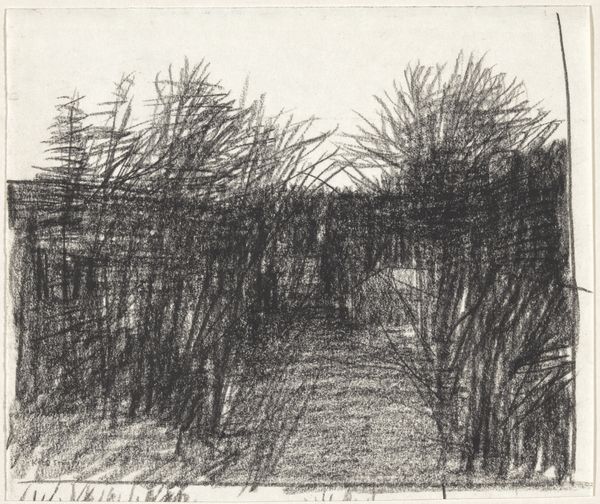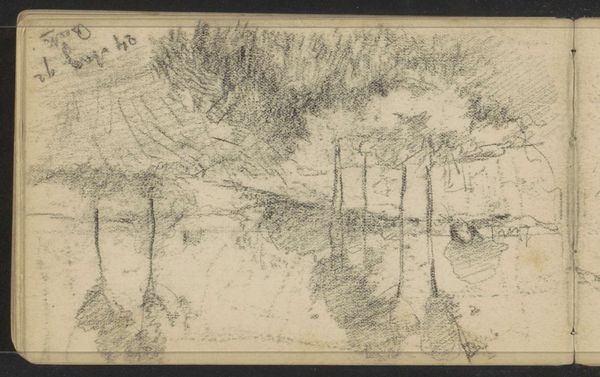
drawing, pencil, charcoal
#
drawing
#
impressionism
#
pencil sketch
#
incomplete sketchy
#
landscape
#
pencil
#
charcoal
Copyright: Rijks Museum: Open Domain
Editor: So, this is Anton Mauve's "Kudde schapen bij een bosrand," from around 1876-1879. It's a drawing using pencil and charcoal, currently housed in the Rijksmuseum. The sketchiness gives it a melancholy feel, like a memory fading away. What do you see in this piece? Curator: It’s a glimpse into the social fabric of the late 19th century, isn't it? Landscape art wasn't just about pretty scenery; it was often deeply intertwined with land ownership, rural labor, and even colonial exploitation. Consider the sheep - they symbolize a pastoral ideal, but that ideal relies on specific power dynamics, gendered labor roles, and economic structures. Editor: That’s not something I immediately picked up on. How can you tell just by looking at it? Curator: Look at how the landscape is presented: it feels almost romantic, yet the reality for many rural workers during that time was one of hardship. Artists like Mauve, while perhaps not explicitly critiquing the system, were nevertheless part of a larger cultural conversation about the changing relationship between humans and nature, and the consequences of industrialization. Who owned the land? Who benefited from the sheep? Whose stories are missing from this idyllic scene? These are all questions we might ask. Editor: It's like the image is both beautiful and loaded with historical context, which definitely complicates things. So, you're suggesting that we consider what this idyllic imagery obscures, as much as what it depicts? Curator: Precisely! By examining these intersections of art, society, and power, we can gain a much richer understanding, don’t you think? Editor: I agree. I'll definitely look at landscapes differently now, keeping in mind those missing stories and power dynamics. Thanks!
Comments
No comments
Be the first to comment and join the conversation on the ultimate creative platform.
